Climate & Environment
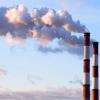 Increasing the efficiency of power plants’ efficiency is often assumed to be an effective means of reducing carbon emissions. However, an empirical analysis of plants’ efficiency and emission led by a University of Colorado Boulder sociology professor casts some doubt on that conventional wisdom.
Increasing the efficiency of power plants’ efficiency is often assumed to be an effective means of reducing carbon emissions. However, an empirical analysis of plants’ efficiency and emission led by a University of Colorado Boulder sociology professor casts some doubt on that conventional wisdom.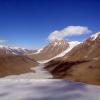 Scientists and students working with the National Science Foundation, including Associate Professor Michael Gooseff of environmental engineering and INSTAAR, have authored a series of papers on how a single season of intense melting in Antarctica in 2001-02 may affect the continent’s ecological future, including its potential impact on global climate change.
Scientists and students working with the National Science Foundation, including Associate Professor Michael Gooseff of environmental engineering and INSTAAR, have authored a series of papers on how a single season of intense melting in Antarctica in 2001-02 may affect the continent’s ecological future, including its potential impact on global climate change. Methane emissions from global fossil fuel development are up to 60 percent greater than previous estimates, according to a new study.
Methane emissions from global fossil fuel development are up to 60 percent greater than previous estimates, according to a new study.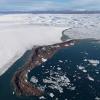 Previous estimates of ice mass loss from the Greenland Ice Sheet—already known to be shrinking—may be underestimates, according to a new study co-authored by CU Boulder researchers. Photo credit: Greenland's Zachariæ Isbræ, Anders A. Bjørk
Previous estimates of ice mass loss from the Greenland Ice Sheet—already known to be shrinking—may be underestimates, according to a new study co-authored by CU Boulder researchers. Photo credit: Greenland's Zachariæ Isbræ, Anders A. Bjørk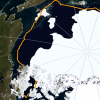 The Arctic’s ice cover appears to have reached its minimum extent on September 10, 2016, according to scientists at the National Snow and Ice Data Center (NSIDC), part of CIRES and the University of Colorado Boulder.
The Arctic’s ice cover appears to have reached its minimum extent on September 10, 2016, according to scientists at the National Snow and Ice Data Center (NSIDC), part of CIRES and the University of Colorado Boulder.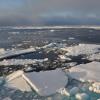 The Arctic is nearing its seasonal sea ice minimum this month, but predicting exactly when the region will see its first ice-free summer may be more difficult than previously believed.
The Arctic is nearing its seasonal sea ice minimum this month, but predicting exactly when the region will see its first ice-free summer may be more difficult than previously believed.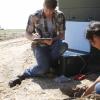 While the earthquake that rumbled below Colorado’s eastern plains May 31, 2014, did no major damage, its occurrence surprised both Greeley residents and local seismologists. To some Greeley residents, the magnitude-3.2 earthquake felt like a large truck hitting the house.
While the earthquake that rumbled below Colorado’s eastern plains May 31, 2014, did no major damage, its occurrence surprised both Greeley residents and local seismologists. To some Greeley residents, the magnitude-3.2 earthquake felt like a large truck hitting the house.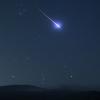 It’s August and that means the hottest show in the night sky, the Perseid meteor shower, will make it annual appearance – peaking in the pre-dawn hours tonight through Aug. 13.
It’s August and that means the hottest show in the night sky, the Perseid meteor shower, will make it annual appearance – peaking in the pre-dawn hours tonight through Aug. 13. Through CU Boulder's Office of Industry Collaboration, entrepreneur Bart Foster has teamed up with members of the campus community to look into an optical solution, how to recycle the byproduct of eyeglass lenses. Made out of three or more types of plastic, currently several tons of the material are dumped into landfills each year.
Through CU Boulder's Office of Industry Collaboration, entrepreneur Bart Foster has teamed up with members of the campus community to look into an optical solution, how to recycle the byproduct of eyeglass lenses. Made out of three or more types of plastic, currently several tons of the material are dumped into landfills each year.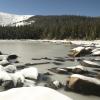 Earlier snowmelt periods associated with a warming climate may hinder subalpine forest regulation of atmospheric carbon dioxide (CO2), according to the results of a new University of Colorado Boulder study.The findings, which were recently published
Earlier snowmelt periods associated with a warming climate may hinder subalpine forest regulation of atmospheric carbon dioxide (CO2), according to the results of a new University of Colorado Boulder study.The findings, which were recently published


